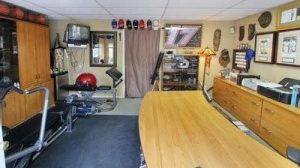Now is a great time to start an online workshop. While online learning was seen as marginal not too long ago, people have come to fully embrace it and it is now viewed as a viable alternative to in-person learning. But setting up a workshop is about more than lecturing people in front of a camera. Workshops are meant to be interactive and objective, which makes them a bit more challenging than the average course. This is why you need to plan your workshops properly and use the right tools in the right ways. Let’s take a look at how you can set up a successful online workshop.
Content Planning
Content planning is the key to a successful workshop. Identify which topics will be covered and how much time will be dedicated to each. Plan time for interactions and questions. In addition, decide how many blocks the workshop will have and sequence them in a logical order.
Things will get a bit more complex if you’re dealing with multiple instructors. Effective collaboration will be extremely important when creating the workshop. Make sure that you’re all on the same page and that the presentation is fluid. If you’re building the workshop remotely, use virtual sticky notes for ideation. Virtual sticky notes can be accessed by everyone in the team, so they can provide their input. This will make collaboration more seamless and make your workshop feel cohesive.
Get the Proper Tools and Equipment
You will then need to find the right equipment to record your workshop. You can’t afford to skimp on quality here. You don’t necessarily have to get a top-of-the-line DSLR camera for this, but you will at least need to get a high-resolution webcam.
Choose one that has at least a 1080p resolution with a built-in microphone. It’s also very important that the camera can capture wide angles. You always have the option of hiring a freelancer to record the workshop or rent a dedicated studio.
Choose the Environment Wisely
Make sure that you record the workshop in the right area as well. If you decide to record footage at home or in your office, the area should be free from outside noise, have good lighting, and the background shouldn’t be distracting. If you want a nice background but your office or room looks dull or uninteresting, use a fake backdrop or a green screen.
Choose the Proper Platform
The next step is to find the proper platform for your workshop and go live. Choose a platform that will allow you to collect payments safely and follow up on your students’ progress. It should also accept content in multiple formats and offer good support, both to you and your users. Some good options include Udemy, Podia, and Pathwright, just to name a few.
This is all you need to know if you want to set up a successful workshop. Once you have the basics down, you’ll be able to continually refine your workshops until you become an expert.







